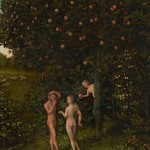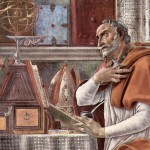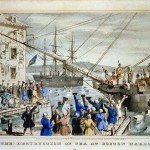
Liturgy is mystogogical. In other words, one role of liturgy is to teach and form the faithful, to catechize us both in and out of formal liturgical events.
If our home is a “domestic church,” then it should look, sound, and feel like a church, especially if we live with children. Why? Because churches are decorated and arranged for more than ornamental purposes. The pictures, colors, structure, style, and order of a church are all deeply catechetical. The images teach and show. The form of the rituals are the curriculum for lessons that go unstated. The homily is but a supplement to the vestments worn, the songs sung, and the intentional, repetitive order of it all. Liturgy is educational in the deepest sense.
This is not just pedagogy; this is mystagogy.
The season of Advent may be the most educationally significant liturgical period, for countercultural reasons. Since no one else seems to observe Advent these days — including many Catholics — the domestic church that celebrates this season stands out, teaching an additional lesson about the radical exception of the Gospel. We are not of this world. We prepare for Incarnation. We do not skip over the need to wait.
*
When I was a young boy, my abuelito Rocha took me to the traditional Mexican posadas. There I saw a rich Advent tradition, rooted in Catholic faith and Mexican folklore, that was alive and fun. It mimicked the Christmas story, but it was about the journey, seeking a place to stay, teaching about making a place for Christ and hot chocolate. At home growing up, we abstained from Christmas until, well, Christmas. While it sometimes seemed harsh and hokey, it had an inner logic that was undeniable. It made sense.
Our Advent season these days is spend traveling, so we do not often get to experience the season as a whole in our home, but there are many ways to teach Advent to our children, to enable Advent to teach them (and us) about their faith.
Here are six tips for your home and family:
1. The unadorned tree. I know about the Jesse Tree, which is lovely and a great idea, but we’ve come up with a derivative simile. We put up a pine tree, and call it an “Advent Tree,” leaving it unadorned until Christmas. Christmas morning, the tree is transformed into a beautiful Christmas Tree. You can improvise with this according to custom or imagination in all sorts of creative ways.
2. Advent music and winter music, but no Christmas music until Christmas. There are many beautiful Advent hymns and songs and there is wonderful seasonal music about winter that can be played and listened to. Christmas music is confusing. I think about this the way one might think about planning a Mass. Would you play “Joy to the World” as the recessional hymn on the second Sunday of Advent at your parish? No. Never. It would be inappropriate. So why would you play it in your domestic church?
3. Advent calendars. All kinds. Expensive. Goofy. Homemade. Portable. Not hard, make it fun. You can also make it instructive with Bible verses. We use candy.
4. Use your Advent wreath. An Advent wreath is a beautiful decoration, but it is also a powerful educational tool, a curriculum. There are all sorts of ways to make one and a variety of ceremonies and private observances to use. Try one. Is there anything close to your ethnic heritage? A folk song from the Old World? Check it out. You can also teach your kids lessons about match safety.
5. Gaudete Sunday! REJOICE, in pink, rose, carnation, or whatever. The color stands out, gives a foretaste, changes the rhythm. Take advantage.
6. The gradual Nativity scene. There is a Mexican tradition to “acostar el Niño” (to lay the Baby down) on Christmas Night. You can’t do that if the Baby has been there prior to birth. It also doesn’t make any sense. Children are sensible creatures and they understand the progression of history and biology. Don’t let your Nativity scene fly in the face of common sense. We like to begin the scene with the setting — the animals and shepherds alone, awaiting the Event — as Mary and Joseph start traveling on the furthest side of the house, they approach, gradually, and on Christmas the Child is born! We lay the Child down; having a detachable manger and Child helps. (Then the Kings start to approach, during Christmas, too. They arrive on Epiphany, with most of the gifts)
These are just a pile of tips, not dogmas. Ideas. There are many more, and none of them are absolutely required. The only requisite is the attempt and the intent to observe Advent. Be thoughtful. Be a teacher. Prepare for the infant Rabbi.
*
Adults can certainly gain a great deal from the lessons of Advent, from the rigor of keeping Christmas in Christmas, from practicing the radical hope of Advent. But, most of all, these lessons are essential for our children. We can argue about the liturgical knick-knacks and details amongst ourselves, but the educational significance cannot be dismissed or quibbled over.
At the very least, observe Advent for our children.
If you care about catechizing your children, then the most powerful tool at your disposal right now, and always, is the mystagogy of the liturgy. The only necessity is fidelity. How faithful is your domestic church to the imagery, sounds, and themes of your Church? The answer will measure the educational efficacy of your curriculum.
I wish you all a blessed Advent.











